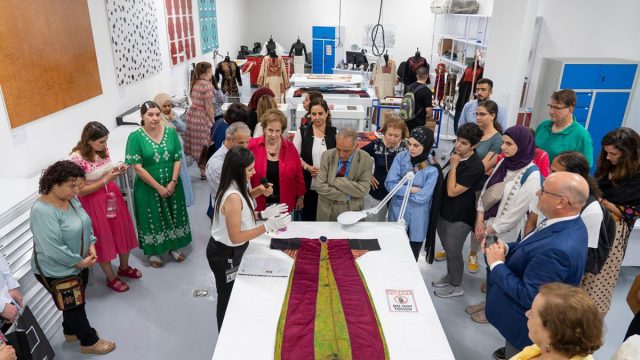Paper conservator Susan discusses the unusual materials from which this fan is made and the many hours it took to prepare it for the exhibition.
Written by Susan Catcher, Senior Paper Conservator
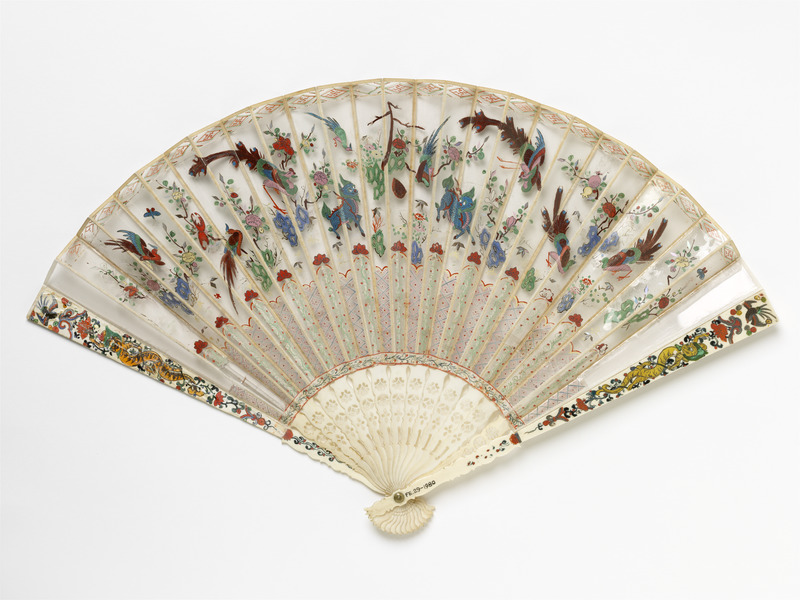
One of the Asian fans included in the Fashioned from Nature exhibition due to open 21 April 2018 required extensive conservation treatment in order to allow the concertina movement to fully function and the fan to open and close safely.
This fan, FE.29-1980, is constructed of painted ivory guards, pierced ivory gorge and painted mica leaves with the addition of tiny mother of pearl and Chinese kingfisher feather diamonds. Each leaf is formed of two mica pieces supported with a feather-like painted stick, which is sewn at two points. Chinese xuan paper joins the leaves together allowing for a flexible joint to enable the classic concertina motion when the fan is opened and closed. Unfortunately, missing pieces of mica leaf at each guard and previous remedial treatment had restricted the fan’s movement.
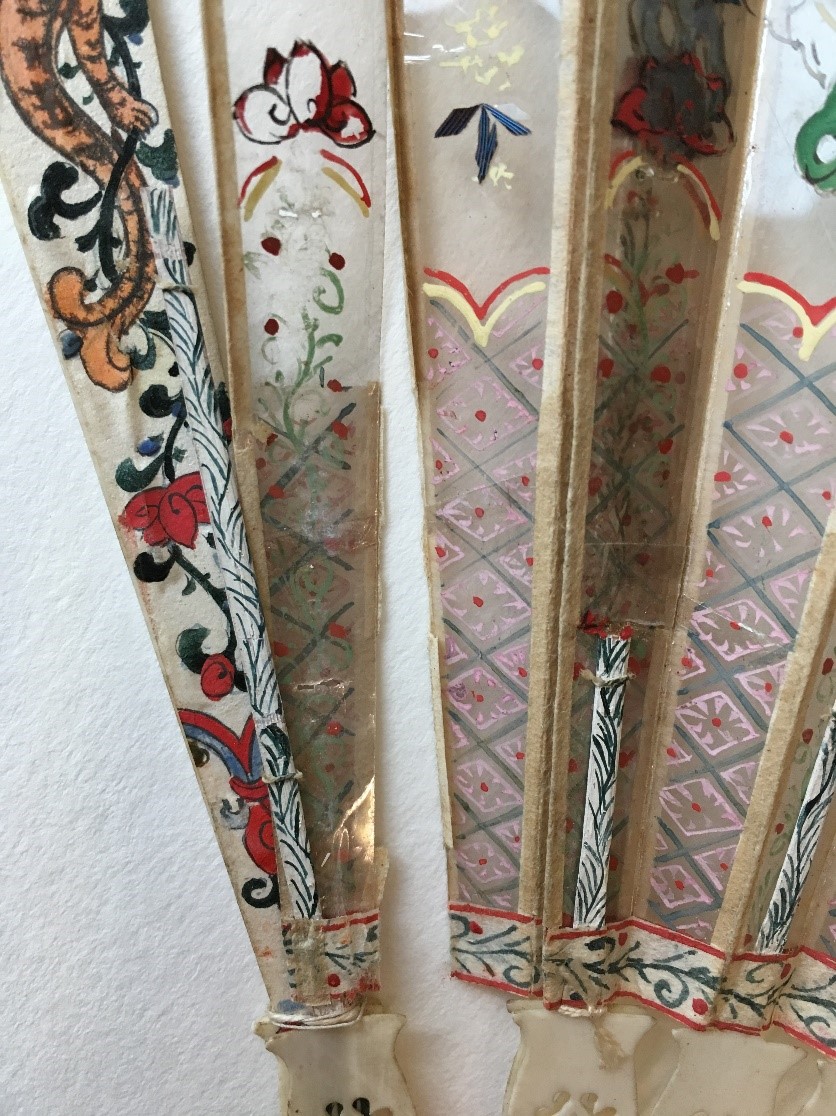
The previous repairs were removed and the fan opened out to reveal the existence of another two leaves, albeit, missing and two ‘floating’ sticks. The guards had been attached to the two next complete leaves forcing an unnatural alignment when closed and a truncated fan shape when open.
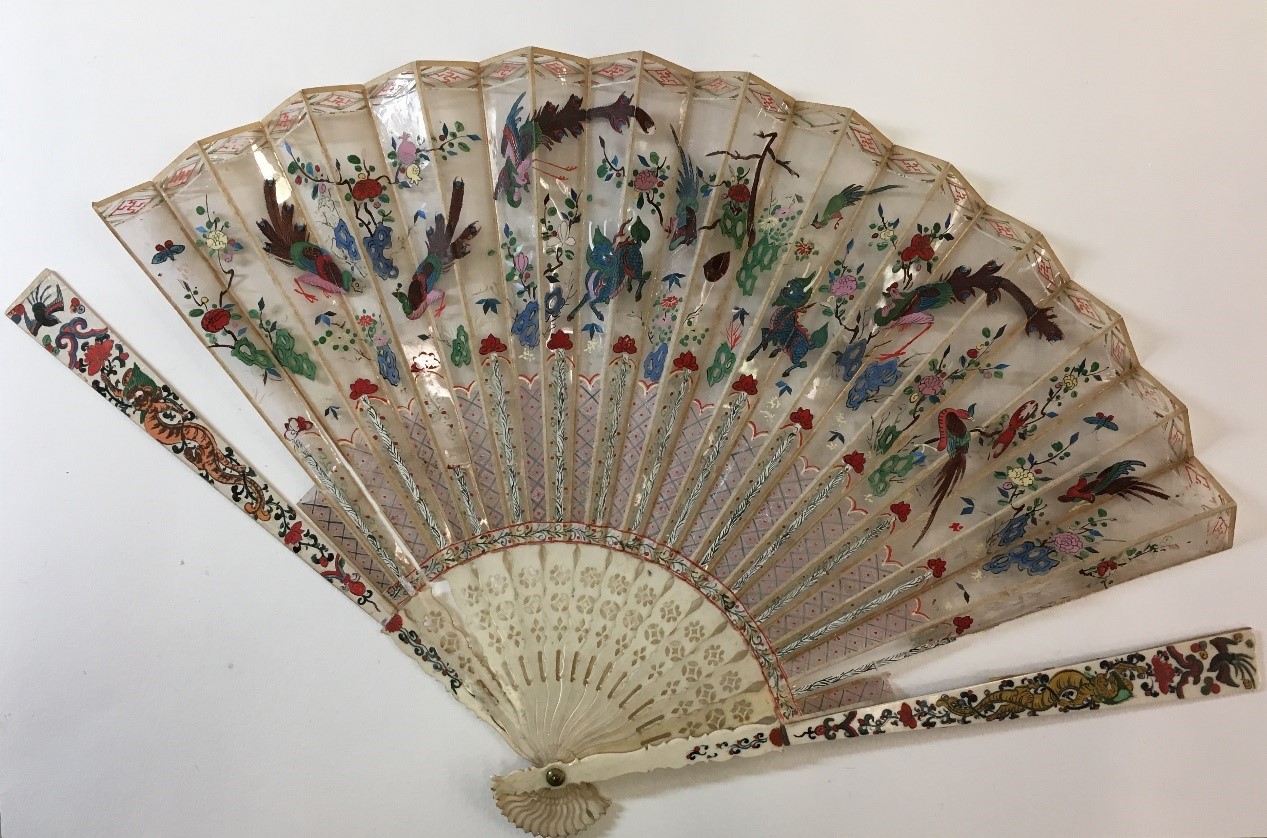
The ivory gorge was cleaned with distilled water and cotton wool rolled onto a stick prior to the conservation of the leaves. A sheet of mica was sourced. Mica is a shiny silicate mineral with a layered structure usually found in granite rocks. It is a natural product with a variety of colours depending on the surround structure. Luckily, we found a sheet in the studio, which was a similar colour and could be split to match the thickness of the fan leaves. Once split the sheet had to be shaped. A pattern was taken from an existing leaf and the split mica cut with a sharp pair of scissors. This was fraught with difficulty as the fine-layered structure of the mica continually broke away. Thin Japanese paper was adhered to the front and back of the mica with a weak wheat starch paste and left to dry. The pattern was traced onto the paper surface and again cut out with scissors. The Japanese paper protected the surface from the action of the metal on metal of the scissors giving a clean cut. The thin Japanese paper facing was removed with water and the mica dried.
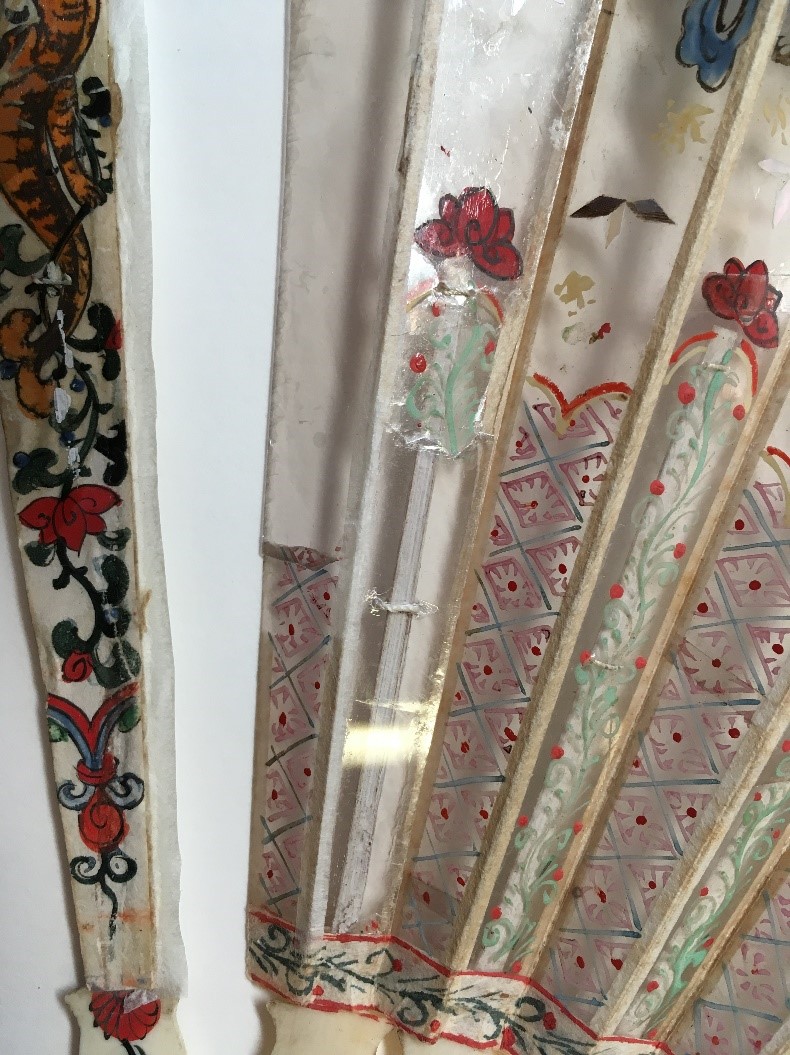
To replace the missing pieces required the lifting of the paper edge to the reverse of each painted guard and a new hinge adhered. Originally a Chinese xuan paper would have been used but this paper has a short fibre and is inherently weak. Instead, a longer fibre Japanese kozo paper was selected having a similar weight and look to the paper joining the leaves. The newly shaped mica leaves were slotted in and the guard hinge adhered with wheat starch paste to hold it in place. A thin joint was created to attach the new mica to the corresponding leaf. This had to be done with the fan closed to take into account the thickness of the mica and make a little gutter for movement as well as making sure the attachment was to the correct side. Each leaf is joined to the outside edge alternating to form the concertina action. As soon as this was dry the fan was opened to check the movement and adjusted accordingly. The two ‘floating’ sticks were sewn to the new mica leaves with a silk thread, the sewing hole having been pierced with a short Japanese awl. The hidden decorated paper strip at the bottom edge of the fan was released with water and adhered to extend over the new leaf and a new paper edge to the top edge attached.
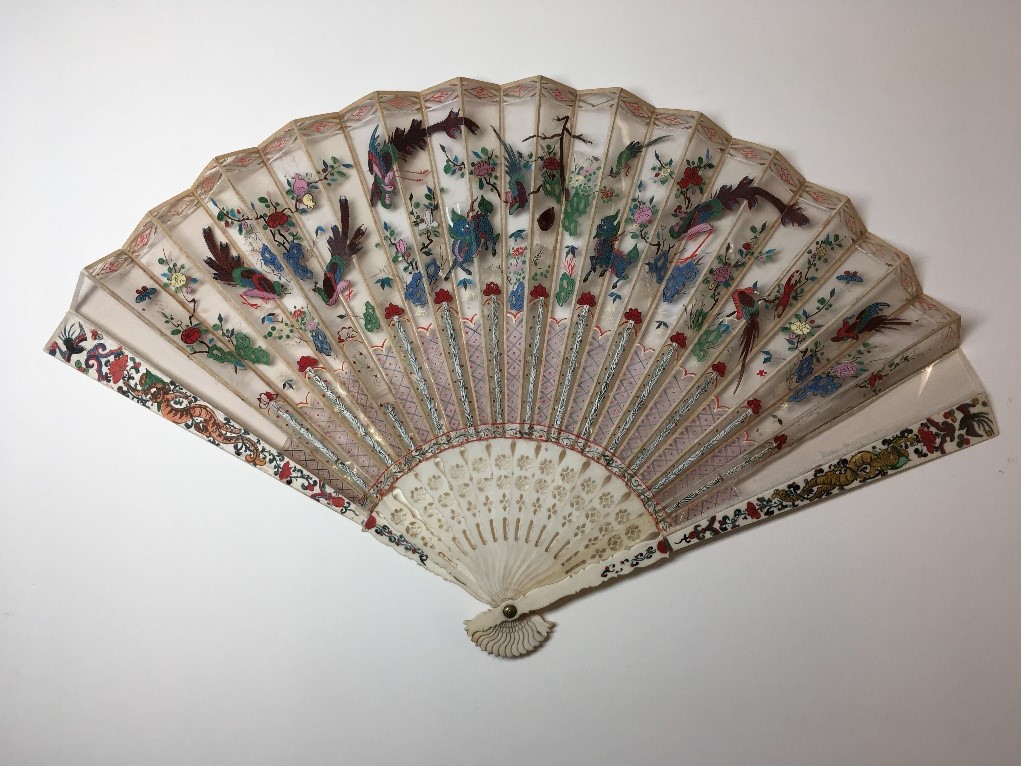
The conservation of this fan enabled the original structure and the movement to be restored. It will be noticed that the painted decoration was not replicated, as there was not enough information to indicate where flowers, birds, rocks and mythical animals should be placed, as well as which side to paint on. The artist has created a dual sided fan including Chinese kingfisher feathers to one side and corresponding Mother of Pearl to the other. The intricate painted detail is worked both to the front and back.
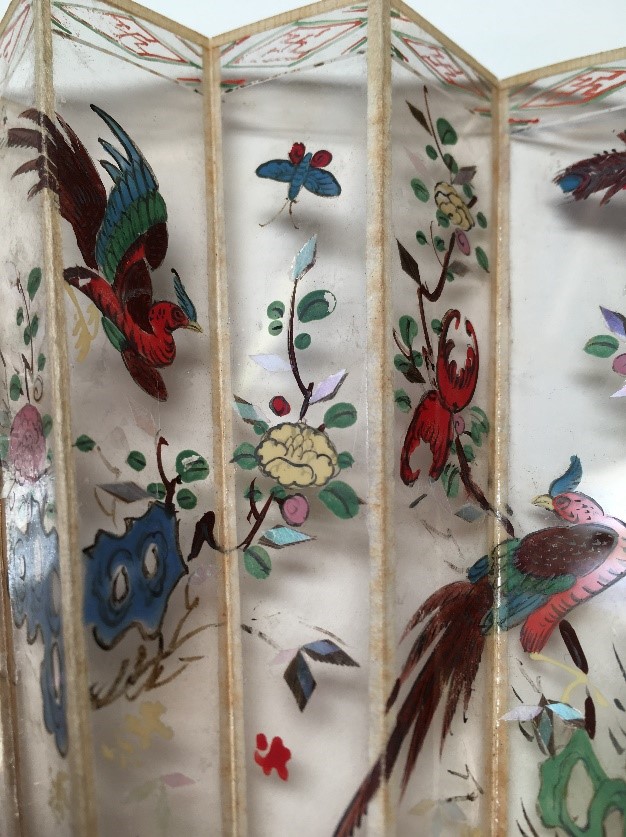
The next blog post will look at the fantastic drawings of a walking dress from 1885 by artist Eileen Budd.


